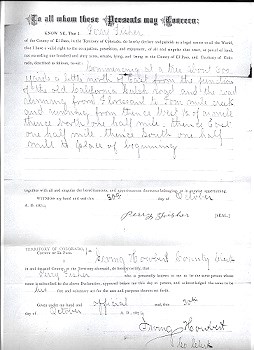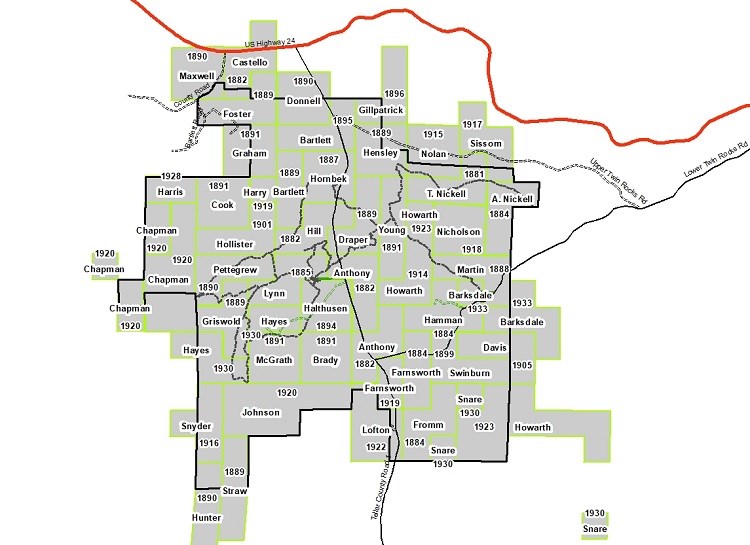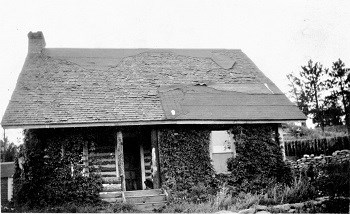|
Like most of the vast western frontier in 1862, the unceded portion of the territory of Colorado including the Pikes Peak region was owned by the U.S. Government and was subject to the terms of the new Homestead Act. Under the act, qualified immigrants could claim at least 160 acres of government surveyed land, improve and live on the property for 5 years, pay a fee, and receive clear title. However, the process of surveying the millions of acres of public land from the Missouri River to the Rocky Mountains took years.

The Pike’s Peak or Bust Gold Rush of 1858 brought thousands of people to Colorado. Hoping to discover gold, they settled in new mining camps and towns throughout the mountains of Colorado. Surprisingly, the area of the fossil beds known then as the valley of Twin Creek remained unsettled until the summer of 1870. James Castello, an immigrant from Missouri and unsuccessful miner, moved from the Fairplay gold fields and established the first trading post in the fossil beds area. He later added a hotel and post office. Known as Judge Castello, he renamed the area, Florissant, after his former hometown in Missouri.
Fifteen years after the Homestead Act was passed, the Florissant valley and the fossil beds area were laid out in townships, sections, sub-sections, and tracts. The survey was then approved in January of 1878 by the U.S.Government’s Land Office in Denver. The Florissant valley was finally open to settlement under the terms of the Homestead Act.
Just weeks after the survey became official, on March 2, 1878,the first homestead claim in the area of the fossil beds was filed by a historic pioneer lady named Adeline Hornbek. She was also one of the first women to file a homesteading claim within the state of Colorado. With the help of her neighbors, she built a two story log house with 5 rooms and a parlor for entertaining and visiting. This amazing house still stands within the Monuments boundaries on its original location and is a symbol of pioneer spirit and courage. Another notable pioneer lady of the Florissant valley was Charlotte Hill. Neighbors of Mrs. Hornbek, Charlotte with her husband, Adam, established the Petrified Stump Ranch in 1874 and played a role in the establishment of the Florissant fossil beds as a world class fossil site. She also worked with Mrs. Hornbek to build the first local school.


Researched and written by Lloyd Lacey, NPS Volunteer in Parks
|
Last updated: November 5, 2022
